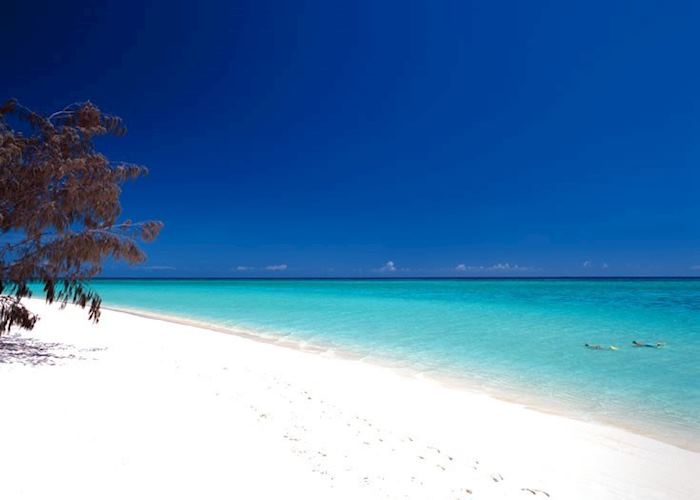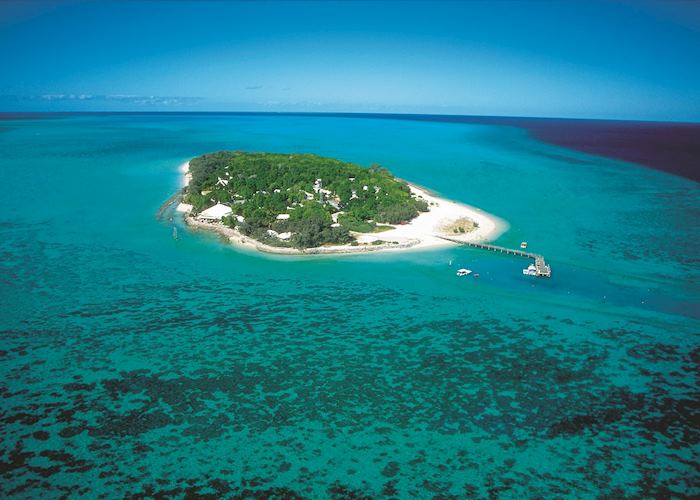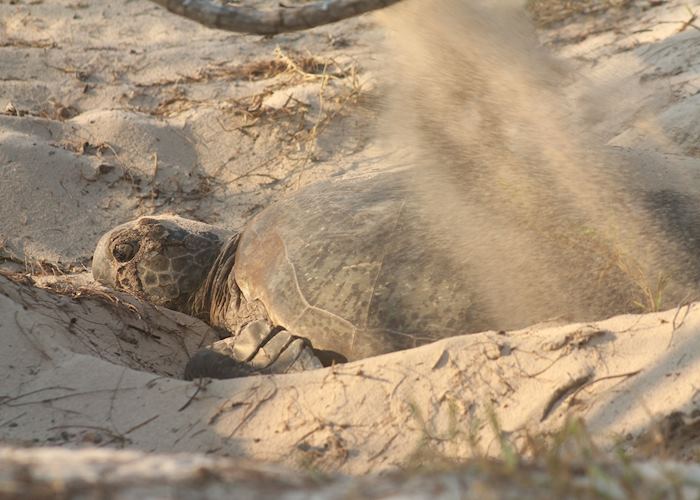Heron Island is a true coral cay right on the Great Barrier Reef: here you can swim off the beach into an endless garden of coral and come face to face with the heaving kaleidoscope of marine life that lives just inches below the surface of the water.
Heron is also one of the few places where you can take a guided reef walk to learn more about the unique ecology of the Great Barrier Reef.
Wildlife
Green and loggerhead turtles have chosen Heron as their nesting place from February to March, when female turtles can be seen laying their eggs whilst hatchlings continue to emerge from their nests.
From June to July migrating humpback whales can be spotted from the beach, and the dense pisonia forests are home to thousands of curious noddy terns.
Activities and accommodation
Be assured that the island’s activities follow a strong ecological theme and feature a range of wildlife presentations and workshops. Take your pick from a Turtle Room overlooking the gardens, to Heron Beachside Suites offering direct beachfront access, or for the ultimate in privacy, take the Beach House, set in a grove of trees with a private boardwalk leading directly to the beach.
There is a relaxed island lifestyle that sets Heron apart, a sophisticated yet casual appeal, with an emphasis on discovering the natural attractions.
who's been there
-
01993 838 92501993 838 810
- Make an enquiry
Places near Heron Island
- Wilson Island 10 miles away
- K’gari 154 miles away
- Sunshine Coast 232 miles away
- Queensland 265 miles away
- The Great Barrier Reef 266 miles away
- Hamilton Island 287 miles away
- Brisbane 287 miles away
- The Whitsunday Islands 289 miles away










